Past Event: Nov 20, 2025
Decoding the Future of Customer Engagement
Strategy Workshop at Churchill War Rooms
1 min read
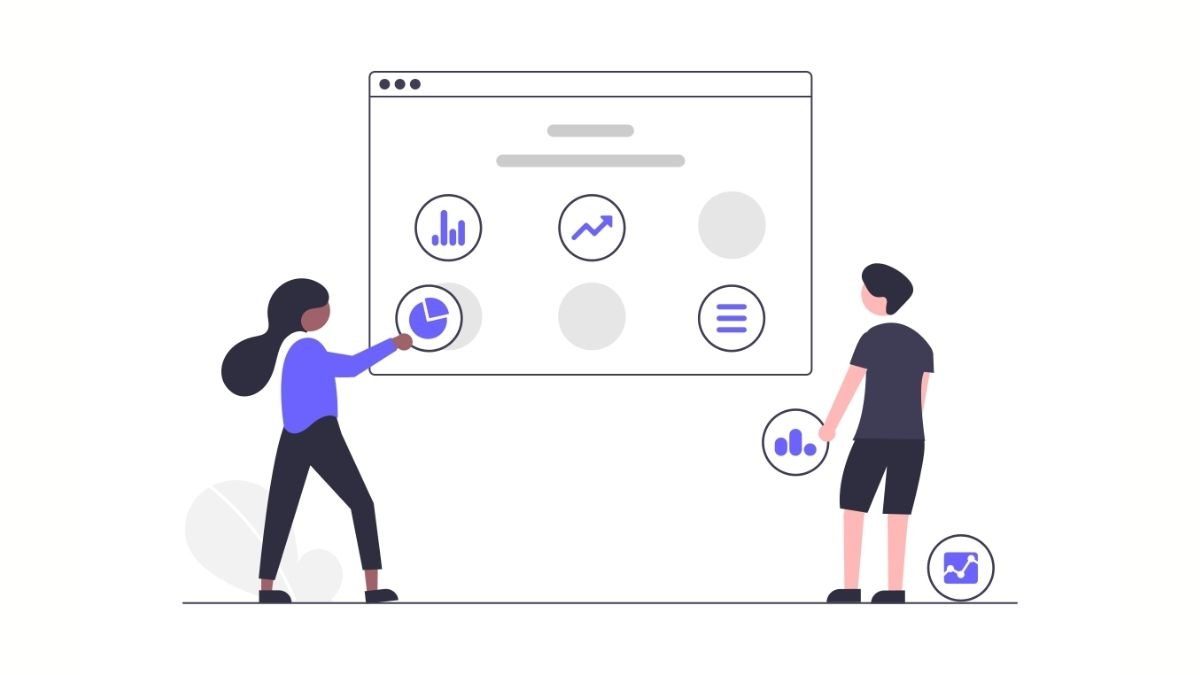
Author: Alex Sensier
5 min read
Poor quality data can lead to poor quality decision making and can harm users’ adoption of CRM solutions - why should you trust a system that’s always out of date? Worse still, Gartner have found that organisations believe poor data quality to be responsible for an average of $15 million per year in losses. (Source)
“Garbage In, Garbage Out” is a common phrase for explaining the concept that inputting rubbish data will provide a rubbish output, and this definitely applies to customer data too. If users are entering, or faced with, rubbish data, how can they be expected to use it in a productive way? Striving for “gold in”, would naturally help ensure you get “gold out”!
Oracle Customer Data Management (CDM) provides CX Cloud customers with processes that help maintain the “golden master” record and a single source of truth from multiple sources. CDM delivers a solid foundation of accurate and relevant customer data that every modern business strives for. This blog explores the key functionality of Oracle CDM and the features that can support businesses to maintain a healthy database, but with a particular focus on helping, sales and marketing users make better decisions.
As well as tools to keep data clean for front and back-office teams, we’ll explore the benefits of a customer data “hub” view and how common data processing events like merging can be tailored to individual business requirements.
Oracle CDM has a number of tools to facilitate entering good quality data. The out-of-the-box integration with Oracle Data-as-a-Service (DaaS) allows users to create Accounts using a smart data “type-ahead” search into the vast set of customer records from the commercial data provider Dun & Bradstreet. This not only creates an Account rich with Dun & Bradstreet’s extensive data sets, but allows users to create a high-quality account record in a matter of seconds.
In the video below, a sales representative searches for and quickly creates a new customer record. DaaS automatically provides a verified address and pre-populates attributes such as the DUNS Number, industry and potential revenue amount.
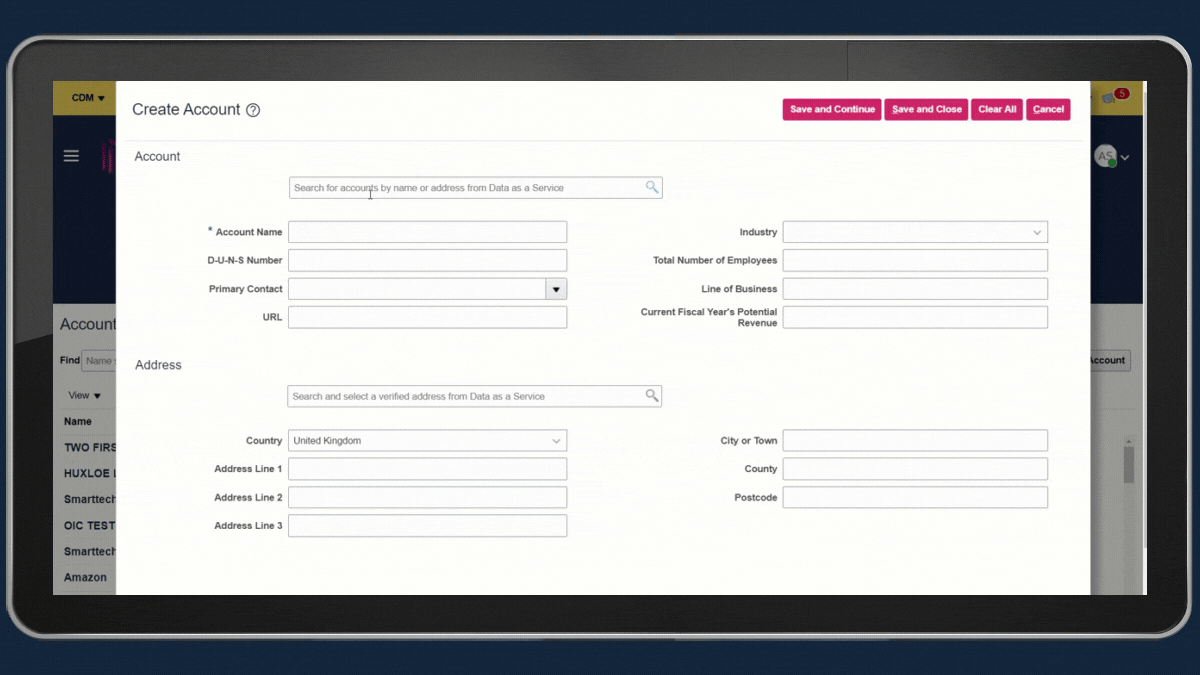
Existing customer records can also be enriched with data from DaaS and, once an account is enriched, background processes will automatically keep the data up to date with any changes.
DaaS also includes Address, Email and Phone verification services that go beyond simple format checking and actually check that the phone, email or addresses exist. The verification is performed in real-time and the result is immediately displayed to the user.
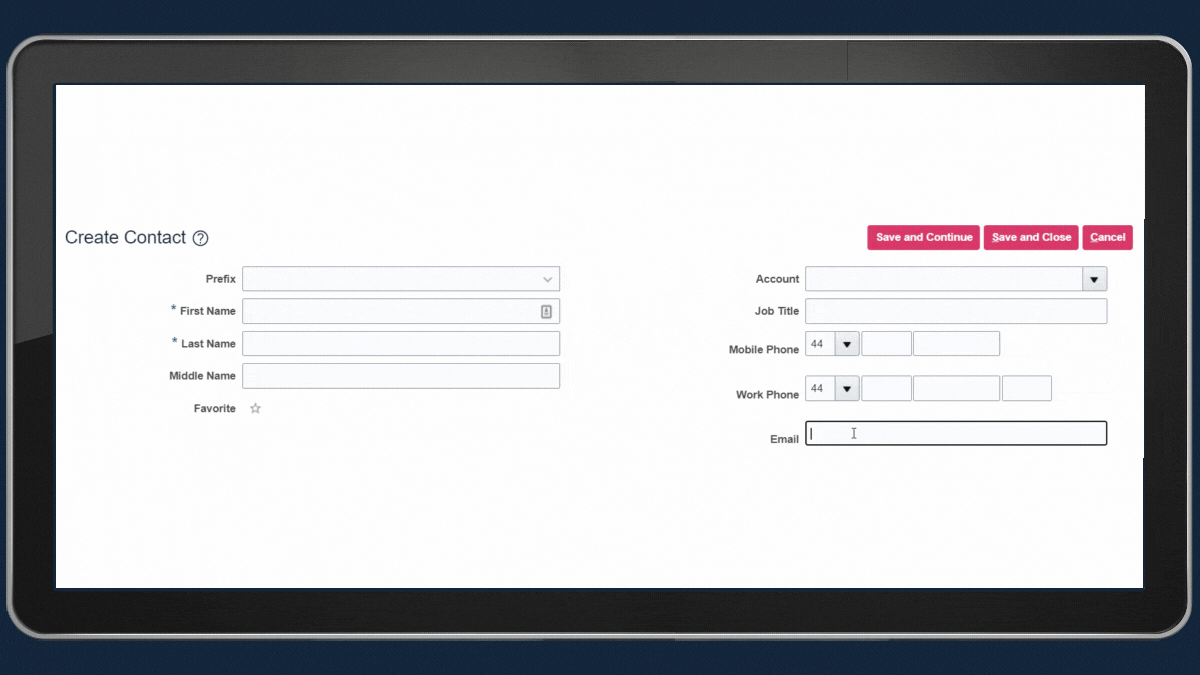
Even without DaaS, real-time alerts can flag to users if an Account being created already exists, which helps to prevent unnecessary duplicates cluttering up the database. Batch jobs can run on a daily basis, too, and automatically resolve any duplicates by merging or linking the records, or alert data stewards and administrators for manual review.
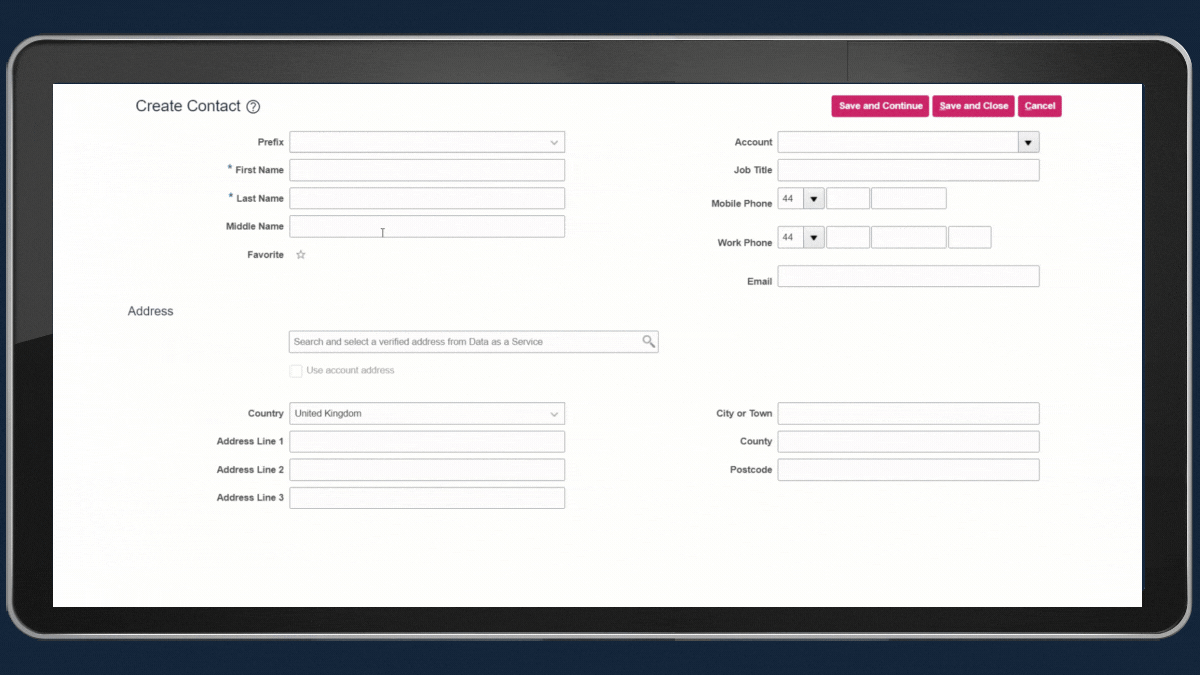
The identification algorithms use Oracle’s powerful Enterprise Data Quality (EDQ) technology, so comparisons like “John” vs. “Jonathan” and “Limited” vs. “Ltd.” are automatically considered and treated the same. The identification rules that triggered a duplicate to be flagged are also shown to data stewards and administrators, giving them the information they require to quickly review and process duplicate records.

One of the big benefits of CDM is the single customer view it provides. Data from multiple business functions (such as Sales, Marketing and Service) and interconnected applications is presented and maintained in the same “hub” view. This gives administrators and data stewards an accurate and complete view of a customer.
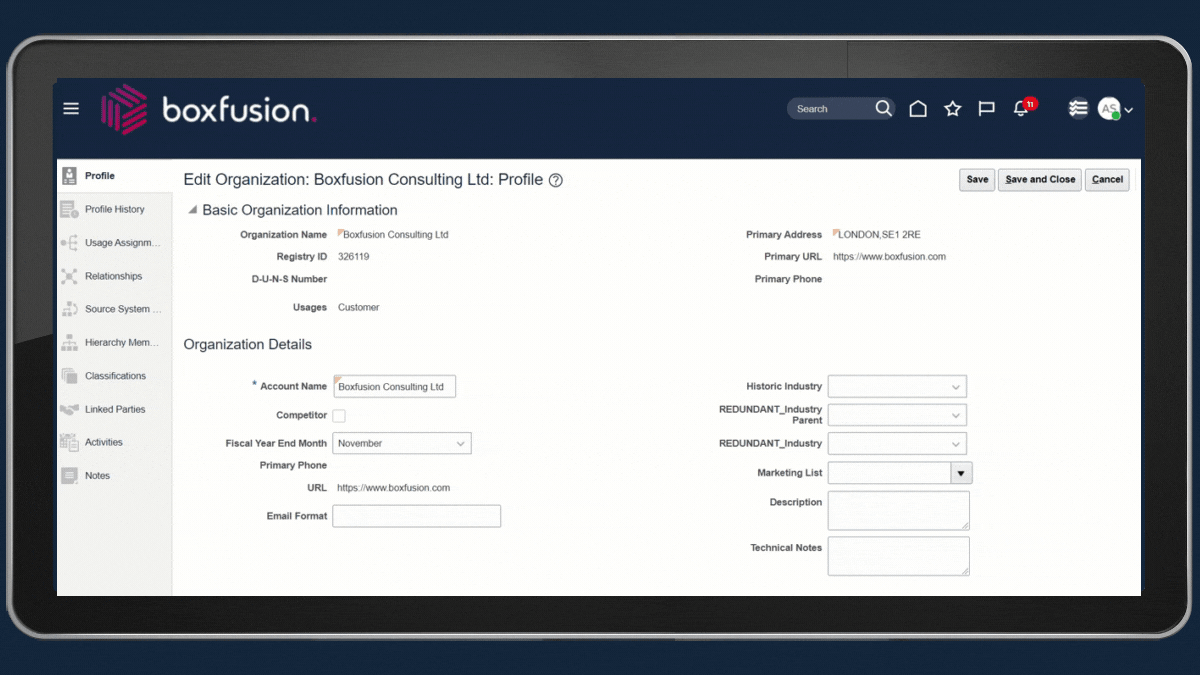
Simple functions like a profile history, which shows an audit of recent data changes, and displaying database identifiers (IDs) from integrated systems provides data stewards and administrators all the information they need to quickly review and troubleshoot any data-related queries.
For bigger implementations involving integrated CRM and ERP processes, Oracle CDM ensures the customer record is always accurate for each department within the business.
When completing data processing events like merging customer records, any related objects (including financial profiles associated with the customer) can also be reviewed and managed by an administrator or data steward.
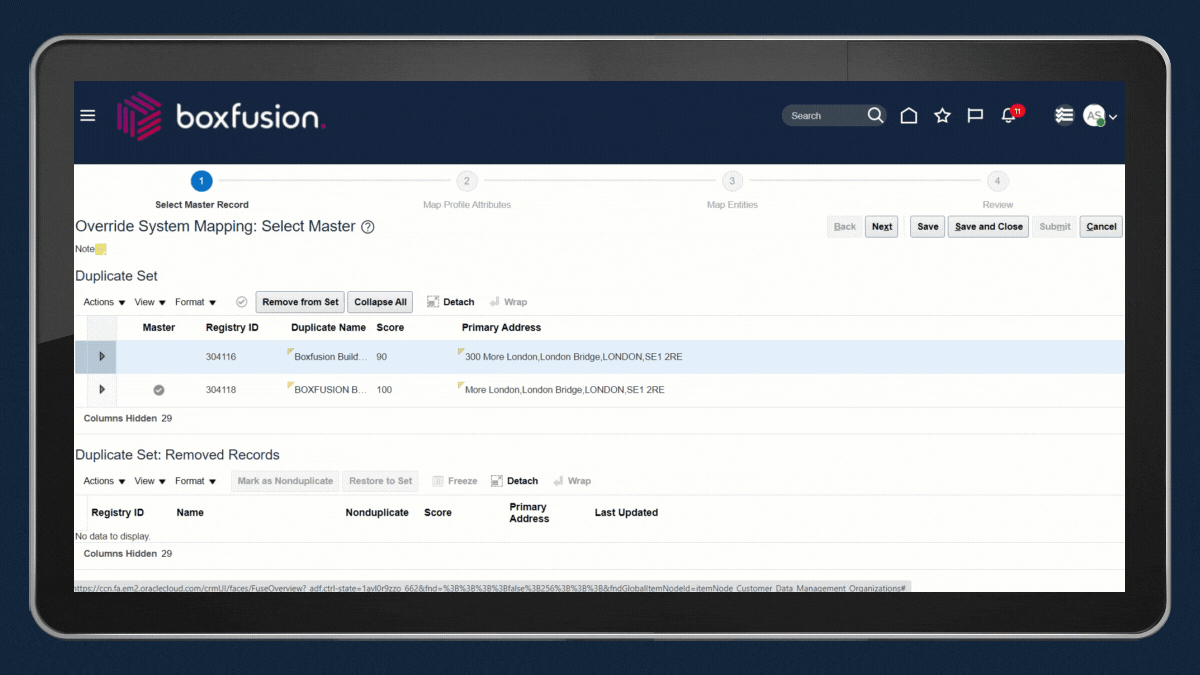
The merge will accommodate transactional data from CRM and other ERP departments and teams, and transfer everything over to the new master record, keeping the customer record completely in-sync for back-office operations.
The way two businesses function will rarely be the same and it would be wrong to assume that data-related rules would be the same for different businesses. As with all components within Oracle CX Sales, the functionality can be easily configured to meet business-specific requirements.
Business rules can be added to prevent data being unwittingly merged and to create the best-quality “golden master” record by cherry-picking attributes from potential duplicates.
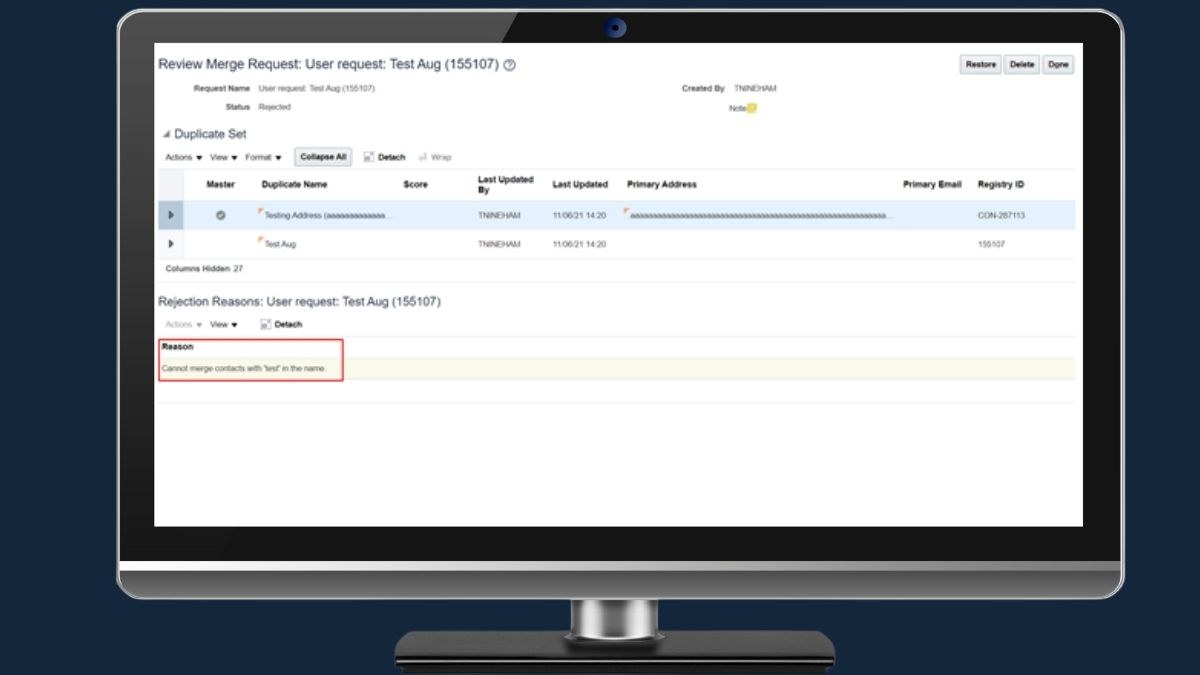
The matching algorithms can also be tested and tweaked to fine-tune when a set of records are flagged as potential duplicates. The test functionality allows a data steward to enter two values and review the matching score and rules that are identified.
In the video below, a typo in the contact name is identified in the EDQ rule which impacts the matching score. Once the typo has been corrected, the score increases.
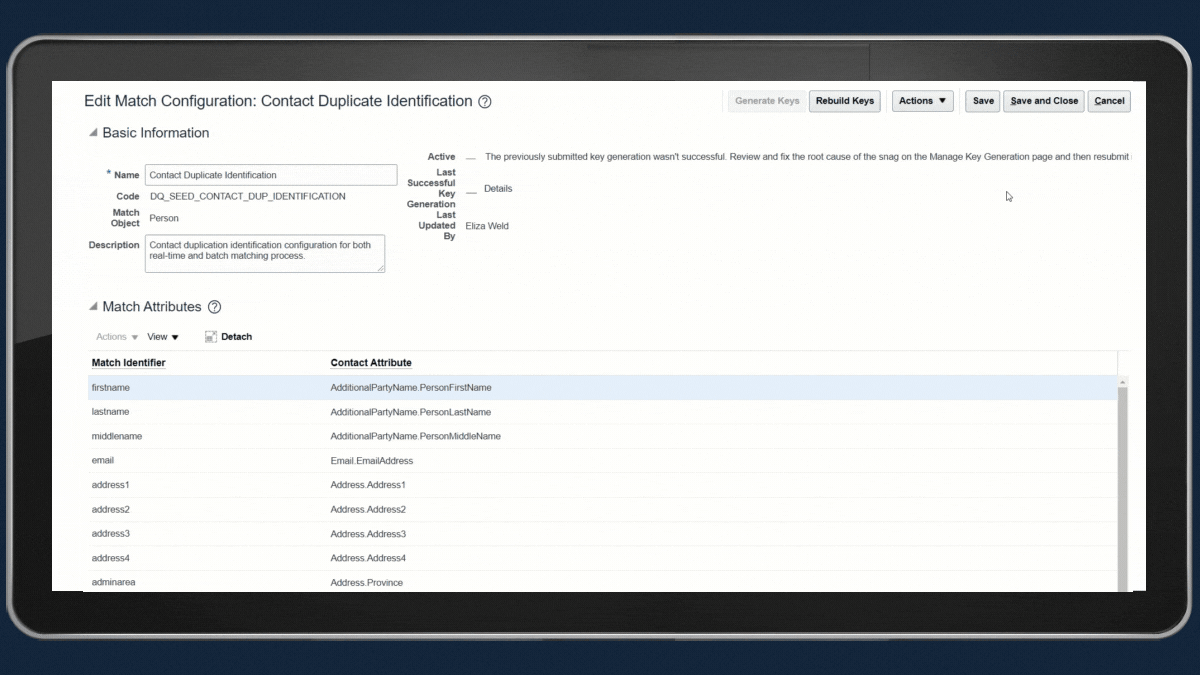
Customer data is available within Oracle Transactional Business Intelligence(OTBI), the built-in reporting application, allowing for real-time reports to be created for sales users and data stewards.
However, sales users can also benefit from Oracle’s data intelligence tool, DataFox, that can enrich customer data using hundreds of unstructured data points (such as news websites and conference attendance data) and trigger alerts to salespeople for important customer events. This can further empower sales users with easy-access to intelligence they previously would have had to trawl through various tools or websites to find themselves.
Keeping data accurate and complete may seem like a daunting task, but configuring Oracle CDM within Oracle CX Sales allows organisations to reap the benefits of a single source of truth and empower their Sales and Marketing users to make decisions with complete confidence in the customer data.
We’ve implemented CDM for many of our CX Sales Customers across different industries and would be happy to discuss how you too can benefit from and improve your customer data management processes.
Our latest eBook explores how we've helped clients unlock the potential of AI and the latest customer service automation tools to drive real impact. It highlights where these technologies can enhance service delivery, boost efficiency, and elevate customer satisfaction.
Strategy Workshop at Churchill War Rooms
1 min read
1 min read
1 min read